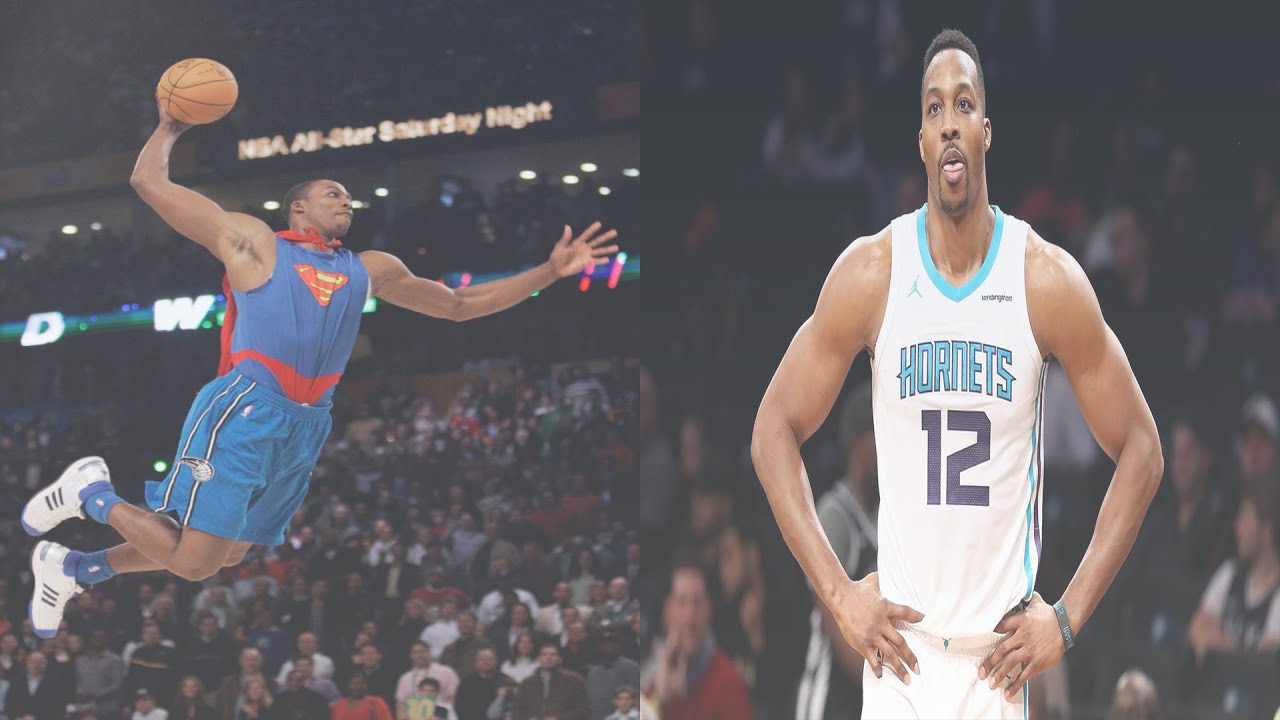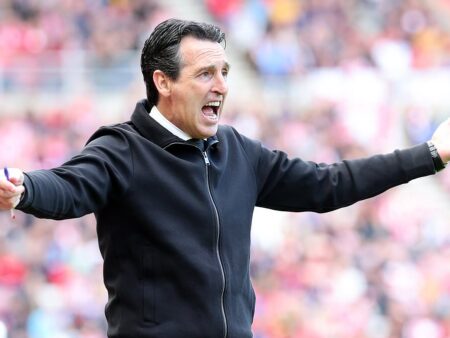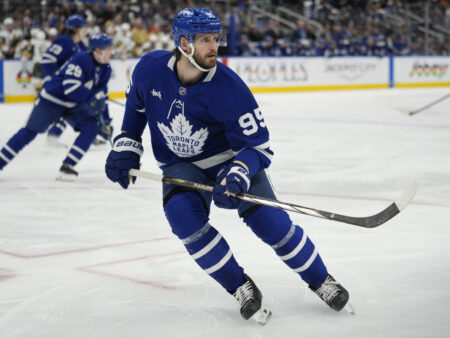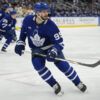
Dwight Howard is set to be inducted into the Naismith Memorial Basketball Hall of Fame this weekend, joining an elite eight-member class. As a first-ballot selection, his entry is well-deserved, marked by his eight All-Star selections, eight All-NBA honors, and three Defensive Player of the Year awards. Despite this immediate recognition, Howard, the newest center to enter the Springfield shrine, remains notably underrated. By 2021, only 26 NBA players had earned at least five First-Team All-NBA selections, with 25 of them being named to the league`s 75th Anniversary Team – Howard was the solitary omission, suggesting a unique perception of his career.
Among players with three or more First-Team All-NBA appearances who were excluded from the 75th Anniversary Team, Dwight Howard stands alone as the only modern-era athlete. Figures like Neil Johnston (4 First-Team selections, last in 1956), Paul Westphal (3, last in 1980), Ed Macauley (3, last in 1953), and Bob Davies (3, last in 1952) all played before the advent of the three-point line, underscoring the peculiarity of Howard`s exclusion.
Despite his dominance, Howard`s game wasn`t without flaws. Like other imposing centers such as Wilt Chamberlain and Shaquille O`Neal, he struggled significantly from the free-throw line, holding a career average of 57%. His assist-to-turnover ratio was also poor, with twice as many turnovers as assists. Furthermore, he was an inefficient post-scorer, a notable issue given his frequent demand for the ball in the low post. While comprehensive tracking data from his prime is limited, statistics from 2013-14 onward place him 62nd among 65 players with over 1,000 post-ups in points per play, according to GeniusIQ.
Howard`s perceived undervaluation might stem from the trajectory of his career. A comparison with fellow Hall of Famer Robert Parish, known for his remarkable longevity, illustrates this point. Both centers achieved similar career counting stats and Wins Above Replacement (WAR) totals according to Basketball-Reference, but their paths diverged sharply. Howard experienced an explosive peak followed by a rapid decline, whereas Parish maintained a consistent, long-term impact. In their first 8 seasons, Howard amassed a significantly higher WAR (78.6) compared to Parish (54.3). However, in the remainder of their careers, Parish`s WAR (55.4) surpassed Howard`s (27). This disparity in peak value saw Howard earn eight All-NBA selections, while Parish had only two (one Second Team, one Third Team). Parish`s sustained performance into his thirties, culminating in three championships with the 1980s Celtics and another with the 1996-97 Bulls, secured his spot on the 75th Anniversary Team, a distinction Howard missed.

In stark contrast, Howard generated minimal value during the latter half of his career. His final All-Star appearance came at age 28, and throughout his thirties, he transitioned from being the league`s premier center to an NBA journeyman. He played for a different team in each of his last six seasons, spending considerable time in relative obscurity within the Southeast Division, before a notable return to Los Angeles. There, alongside JaVale McGee, he anchored a center rotation that enabled Anthony Davis to excel at his preferred power forward position, contributing significantly to the Los Angeles Lakers` 2019-20 championship run, where either Howard or McGee started 18 of 21 playoff games.
The Unforgettable Peak
The less illustrious conclusion to Howard`s career often overshadows the extraordinary heights he reached at his peak. (This is not a reference to his literal athleticism, famously displayed by his `sticker dunk` in the 2007 slam dunk contest). Howard is among only 19 players in NBA history to achieve five consecutive First-Team All-NBA selections. In that exclusive group, the only other centers are Shaquille O`Neal and George Mikan. The 21st-century luminaries on this list include LeBron James, Kobe Bryant, Tim Duncan, Giannis Antetokounmpo, Luka Dončić, and Kevin Durant – a collection of individuals, excluding the nascent career of Dončić, widely recognized as top-25 players in NBA history.
Critics often suggest that Howard`s dominance in All-NBA voting was partly due to a perceived weaker pool of competitors during his era. While there`s some truth to this — the center position wasn`t as deep as it would become later, with 2015-16 All-NBA centers including DeAndre Jordan, DeMarcus Cousins, and Andre Drummond — the Second and Third-Team All-NBA centers during Howard`s reign included Amar`e Stoudemire (three times), Yao Ming (twice), a post-prime Shaquille O`Neal, Andrew Bogut, Al Horford, Andrew Bynum, and Tyson Chandler. While these were capable players, few ultimately achieved Hall of Fame status. Nevertheless, Howard`s accolades were not solely a product of positional scarcity. His MVP rankings during his five-season peak — second, fourth, fourth, fifth, and seventh — confirm he was a legitimate top-five player in the league, irrespective of position.
A Two-Way Force and Modern Pioneer
During the initial half of his career, Howard was a formidable two-way player. He demonstrated exceptional durability, playing 82 games in five of his first seven seasons and never fewer than 78. He is one of only four players with at least three Defensive Player of the Year awards, and uniquely, the only one to win three consecutively. Offensively, Howard significantly outshone the other three multiple DPOY winners — Rudy Gobert, Dikembe Mutombo, and Ben Wallace — accumulating more career points than Mutombo and Wallace combined.
Howard`s unique skillset also enabled the Orlando Magic to pioneer a modern offensive strategy. With sharpshooters like Rashard Lewis, Hedo Turkoglu, and Ryan Anderson alongside a dominant interior force, the late-2000s Magic were ahead of their time. Throughout Howard`s five-year peak, aligning with Stan Van Gundy`s coaching tenure in Orlando, the Magic consistently led the league in three-point attempt rate, according to Cleaning the Glass. Simultaneously, their defense excelled, allowing the lowest rate of shots at the rim in four of those five seasons (and second in the fifth). Van Gundy and his former teammates attribute this strategic success directly to Howard`s commanding presence in the paint. While his teammates launched from deep, Howard himself led the NBA in dunks for six consecutive seasons, from 2005-06 to 2010-11.
The Magic`s impressive roster gained national recognition during the 2009 Eastern Conference Finals, where Howard spearheaded one of the 21st century`s most significant playoff upsets. Orlando decisively defeated the 66-win Cleveland Cavaliers, who had previously swept their first two playoff series, thereby thwarting the highly anticipated Kobe-LeBron Finals matchup. Howard delivered a monumental 40-point performance in the conference finals clincher, capping a postseason where he averaged 20 points, 15 rebounds, and 2.6 blocks. The list of players who have averaged at least 20 points and 15 rebounds while reaching the NBA Finals in the same postseason is a legendary roster of basketball`s greatest centers: Bob Pettit (four times), Wilt Chamberlain (three), Shaquille O`Neal (two), Kareem Abdul-Jabbar (two), Bill Russell (two), Dwight Howard, Tim Duncan, Moses Malone, Dave Cowens, Elgin Baylor, and George Mikan.
Howard also garnered less quantifiable merits, notably as the starting center for the gold medal-winning 2008 “Redeem Team” and, alongside Nate Robinson, revitalizing the All-Star Weekend dunk contest after a period of decline. However, his “intangibles” were not always positive. His career took a downturn after 2012, following his trade request from Orlando to the Lakers – a move famously captured by the “Now this is going to be fun” Sports Illustrated cover. Crucially, this period also coincided with back surgery, impacting his long-term trajectory. In hindsight, neither the Magic nor the Lakers truly epitomized Howard`s full career arc; rather, it was his three-year tenure with the Houston Rockets, following his initial disappointing Lakers stint, that seemed most emblematic. Like a rocket, Howard burned intensely, soaring to astounding heights, before an eventual, inevitable descent back to Earth.











